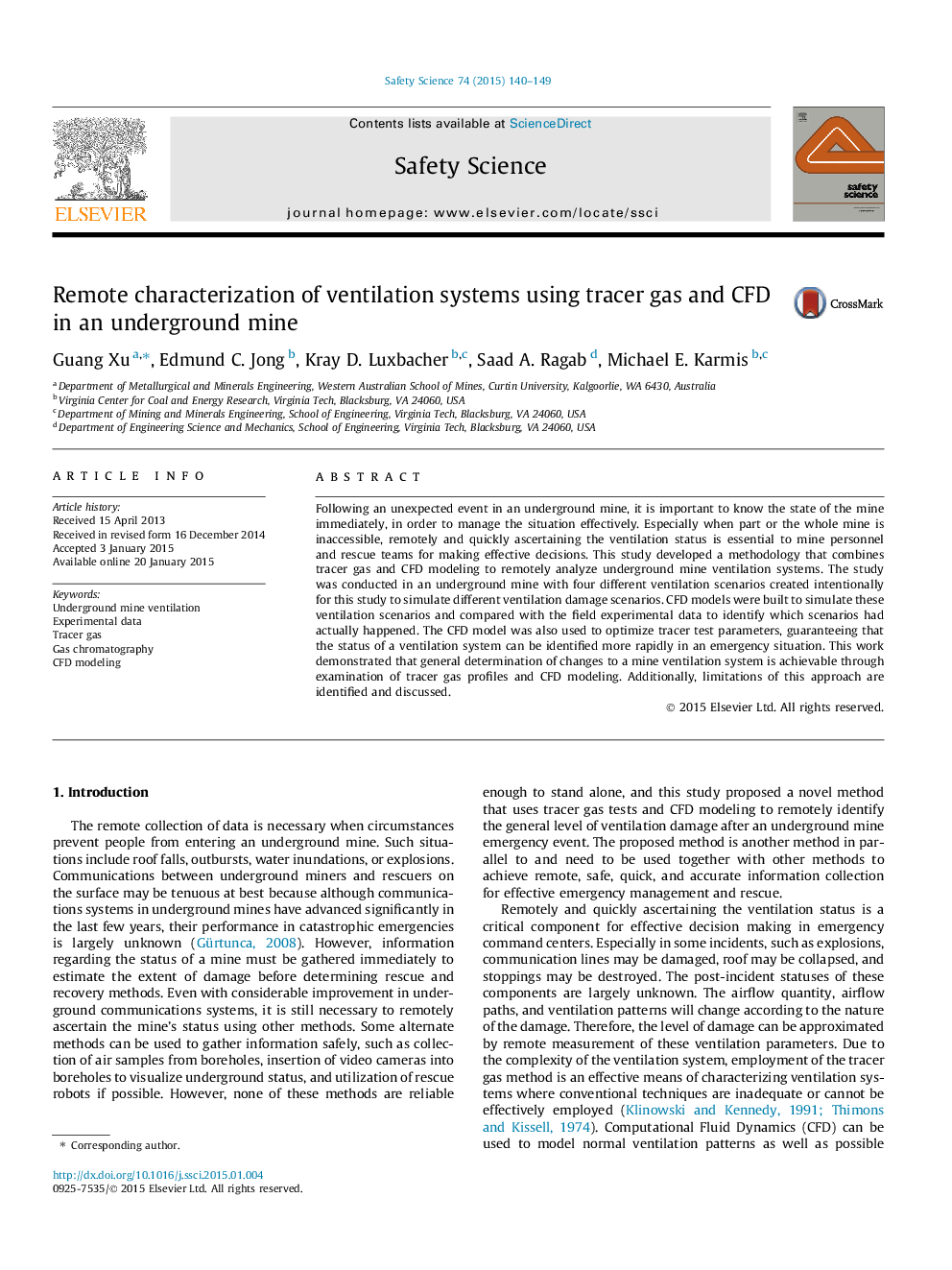| Article ID | Journal | Published Year | Pages | File Type |
|---|---|---|---|---|
| 6975983 | Safety Science | 2015 | 10 Pages |
Abstract
Following an unexpected event in an underground mine, it is important to know the state of the mine immediately, in order to manage the situation effectively. Especially when part or the whole mine is inaccessible, remotely and quickly ascertaining the ventilation status is essential to mine personnel and rescue teams for making effective decisions. This study developed a methodology that combines tracer gas and CFD modeling to remotely analyze underground mine ventilation systems. The study was conducted in an underground mine with four different ventilation scenarios created intentionally for this study to simulate different ventilation damage scenarios. CFD models were built to simulate these ventilation scenarios and compared with the field experimental data to identify which scenarios had actually happened. The CFD model was also used to optimize tracer test parameters, guaranteeing that the status of a ventilation system can be identified more rapidly in an emergency situation. This work demonstrated that general determination of changes to a mine ventilation system is achievable through examination of tracer gas profiles and CFD modeling. Additionally, limitations of this approach are identified and discussed.
Related Topics
Physical Sciences and Engineering
Chemical Engineering
Chemical Health and Safety
Authors
Guang Xu, Edmund C. Jong, Kray D. Luxbacher, Saad A. Ragab, Michael E. Karmis,
